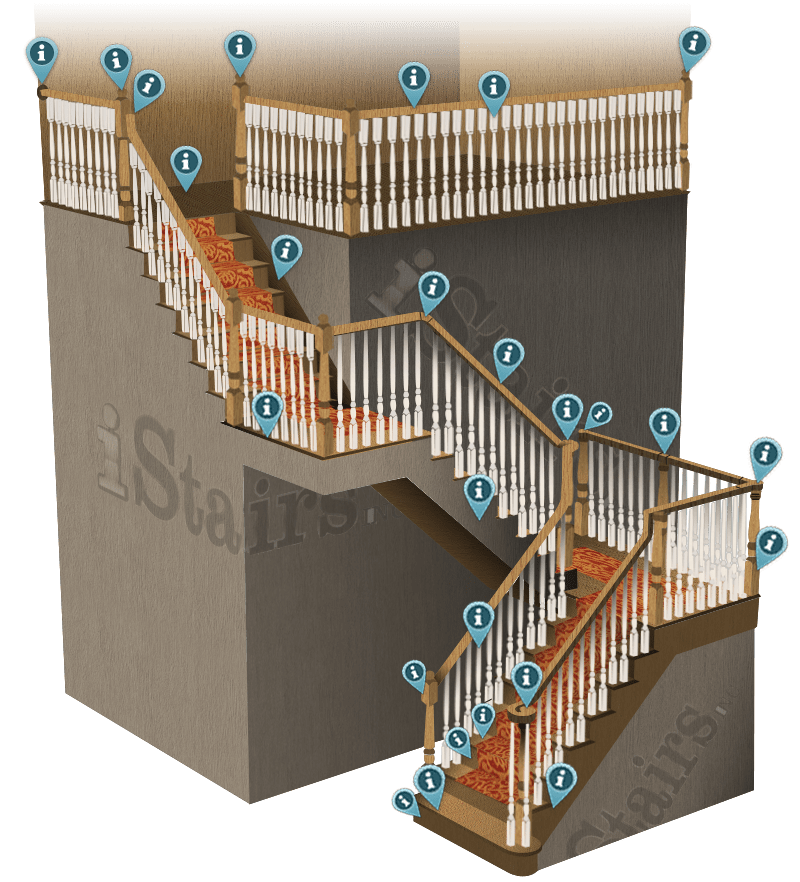When you think about stairs, not a lot of thought is taken for all the components of them. Luckily, stairs are simple but the simple design can be made intricate and beautiful, fitting the design you want and need.
Main Components of Staircases
The first thing to recognize is that there are two main components of staircases. This includes the tread and the riser. The tread is the flat part of the stair where you step. The riser is the vertical portion of the stair that connects two treads. As well as these two main components there are stringers, which are the sides of the stair that connects the tread and the riser of each stair together. Stringers are referred to as the carriage in a staircase (when not referring to an individual stair).
The balustrade, which is made up of a collection of balusters (wood or metal vertical components between the stair and handrail) that holds up the handrail, the part we put our hands for security when ascending or descending the staircase, unless the stairs are enclosed. You can also have a landing, which is a flat part of the stairs that connects two series of stairs together. This provides a safe place to stop before climbing again, or to turn around and switch directions. The newel post is at the end of the balustrade and is a post that ends when the series of stairs end. There can be multiple, specifically if you have a landing.

On the tread, there is a nosing. A nosing is a rounded part of the stair, rounded for safety, that can be done in a different finish or material to define the front edge so they are easier to see.
Here is a list of all the stair parts you should remember:
- Baluster: The vertical post in a balustrade.
- Balustrade: The collection of rails and posts with a rail along the top that form the waist height wall to the sides of stairs.
- Hand Rail: a rail on top of the balustrade to aid you in climbing up and down the stairs.
- Landing: the flat piece of a stair allowing you to rest before climbing again in the same direction or the safe place provided for you to continue climbing the stairs after you turn.
- Newel Post: The post at the end of a staircase and balustrade.
- Nosing: the front edge of the tread, usually rounded as a safety measure and now often in a different finish or material so we can define the front edge of the treads making it easier to see them, climb the stair and they often have a nonslip nosing to reduce accidents.
Although it may seem hard, remembering staircase parts are very simple. Knowing the different parts and their names and functions will give you a better understanding of what they are, especially when you speak to a builder, architect, or any other construction industry professional regarding the topic when you are making your design project choices.